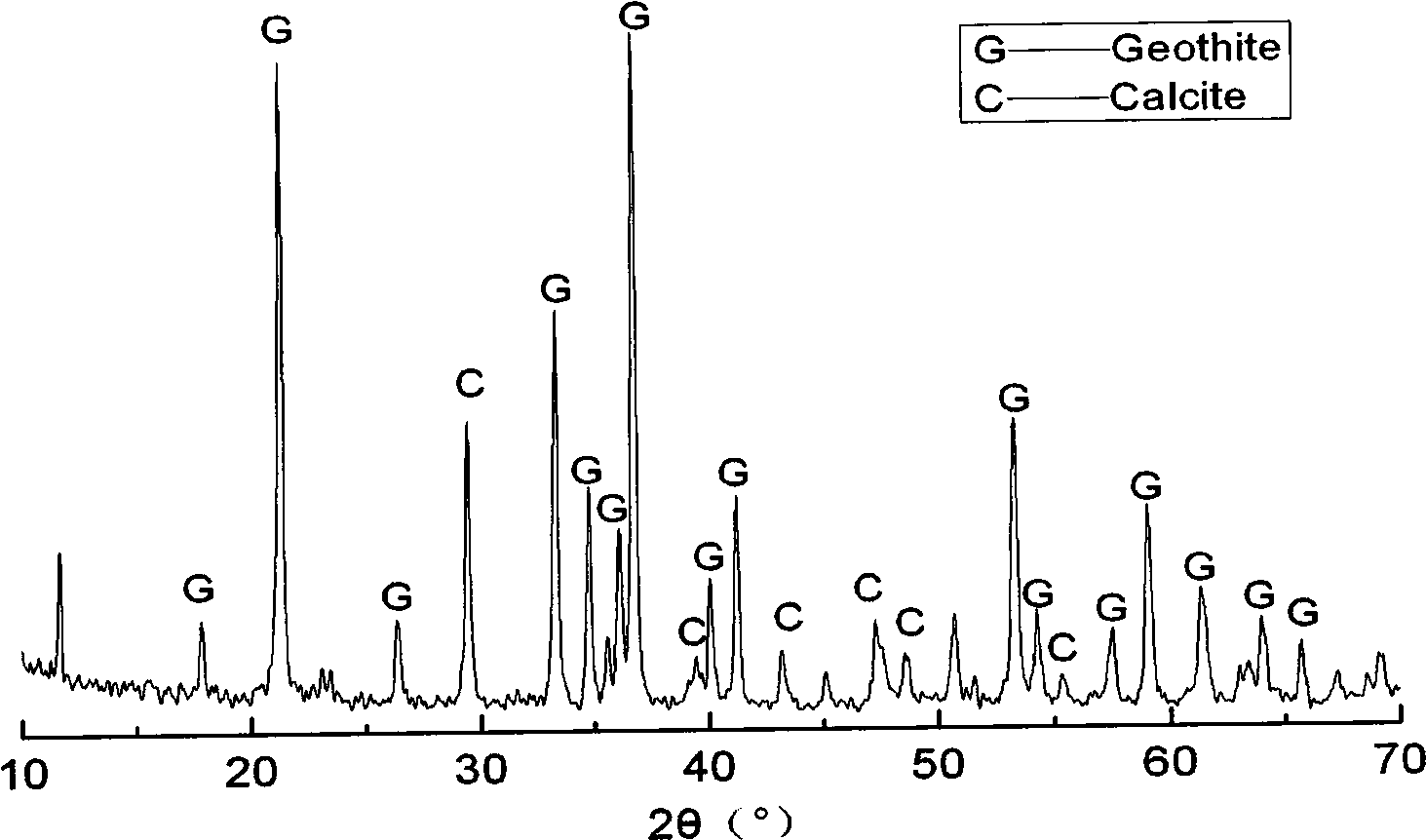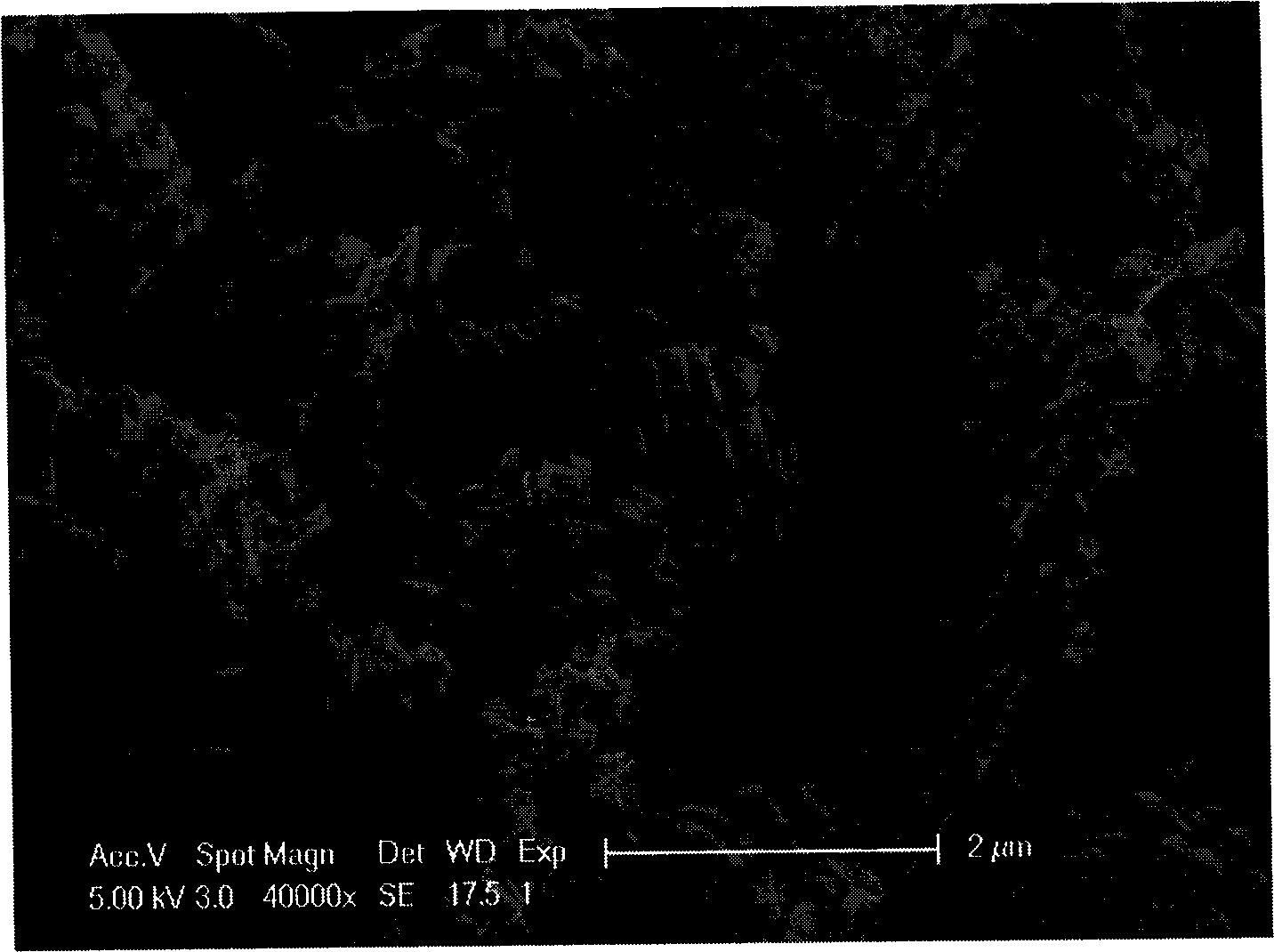Composite material for reducing greenhouse gases discharge and application thereof
A composite material and greenhouse gas technology, which can be used in solid waste removal, water/sludge/sewage treatment, chemical instruments and methods, etc. Effect
- Summary
- Abstract
- Description
- Claims
- Application Information
AI Technical Summary
Problems solved by technology
Method used
Image
Examples
Embodiment 1
[0037] The natural gypsum and the goethite ore are respectively crushed into powders smaller than 10 meshes, and mixed according to a mass ratio of 1:1 to become a composite material for reducing greenhouse gas emissions.
[0038]When in use, first take samples to measure the content of organic carbon in the depth range of 10cm-20cm in the upper part of the pond bottom mud. According to the mass ratio of bottom mud organic carbon to composite material is 1:1-1:2, the composite material is evenly sprinkled into the pond. In water, because the powder particles are relatively coarse, the composite material particles can sink into different depths of the sediment, and due to the reduction and dissolution of microorganisms such as sulfate-reducing bacteria and iron-reducing bacteria, the production of methane is inhibited, and unstable organic carbon is converted into stable carbon dioxide. of inorganic carbon. The experimental results in the laboratory show that after the composit...
Embodiment 2
[0040] The natural anhydrite and the goethite ore are respectively crushed into powders smaller than 10 meshes, and mixed according to a mass ratio of 1:1 to become a composite material for reducing greenhouse gas emissions.
[0041] When using it, first take samples to measure the content of organic carbon in the depth range of 10cm-20cm in the upper part of the pond bottom mud, and spread the composite material evenly into the urban landscape water body according to the mass ratio of organic carbon to composite material of 1:1-1:2. Because the powder particles are relatively coarse, the composite material particles can sink into different depths of the sediment, and due to the reduction and dissolution of microorganisms such as sulfate-reducing bacteria and iron-reducing bacteria, the production of methane is inhibited, and unstable organic carbon is converted into stable inorganic carbon. The experimental results in the laboratory show that after the composite material is p...
Embodiment 3
[0043] The waste slag rich in calcium sulfate and the red clay rich in iron are crushed into powders less than 100 mesh, and mixed according to a mass ratio of 1:2 to become a composite material for reducing greenhouse gas emissions. The composite material is used for the covering soil of the landfill, and the thickness of each layer is laid according to 3-10cm, which can effectively inhibit the emission of methane from the landfill. Experimental results in the laboratory show that garbage fermentation no longer produces exhaust gas, neither CO 2 produced, nor H 2 S, methane gas generation. Nitrogen was used to blow off, and the collected gas was analyzed by gas chromatography, and the existence of methane was not detected. The reason was that the presence of sulfate and iron oxides inhibited the activity of methane bacteria, and the CO produced by metabolism 2 As the pH of the system rises and is absorbed into calcite, H 2 S is converted to iron sulfide.
PUM
 Login to View More
Login to View More Abstract
Description
Claims
Application Information
 Login to View More
Login to View More - R&D Engineer
- R&D Manager
- IP Professional
- Industry Leading Data Capabilities
- Powerful AI technology
- Patent DNA Extraction
Browse by: Latest US Patents, China's latest patents, Technical Efficacy Thesaurus, Application Domain, Technology Topic, Popular Technical Reports.
© 2024 PatSnap. All rights reserved.Legal|Privacy policy|Modern Slavery Act Transparency Statement|Sitemap|About US| Contact US: help@patsnap.com










